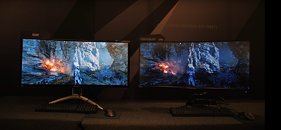
Microsoft Confirms "Auto HDR" Feature in Windows 11 24H2 Update Can Crash Games
Microsoft has confirmed a bug in the Windows 11 24H2 update that is causing widespread gaming issues, specifically affecting systems with Auto HDR enabled. The bug primarily manifests through incorrect color display in games and sometimes causes applications to crash entirely. Some users have reported issues with popular titles, including Call of Duty: Infinite Warfare, Assassin's Creed Valhalla, and Need for Speed Unbound, where games either fail to launch or become stuck on loading screens. Auto HDR, a flagship feature of Windows 11, is designed to enhance gaming visuals by automatically converting standard dynamic range (SDR) content to high dynamic range (HDR). However, this latest 24H2 update has broken the feature's functionality, leading to unexpected behavior and stability issues.
Microsoft has implemented safeguards to prevent affected systems from receiving the 24H2 update. The company has also advised users against manual 24H2 installation through some Media Creation tools or Windows 11 ISOs while Auto HDR is enabled. For users who have already installed the update and are experiencing issues, Microsoft recommends disabling Auto HDR either system-wide or for individual games through the Windows Settings menu. To do this, users can navigate to Settings > System > Display > Graphics and turn off the Auto HDR option. Microsoft has acknowledged the severity of the issue for Windows Latest and is currently developing a fix, though no specific timeline has been announced. In the meantime, users can postpone the 24H2 update or disable Auto HDR functionality to maintain stable gaming performance.
Microsoft has implemented safeguards to prevent affected systems from receiving the 24H2 update. The company has also advised users against manual 24H2 installation through some Media Creation tools or Windows 11 ISOs while Auto HDR is enabled. For users who have already installed the update and are experiencing issues, Microsoft recommends disabling Auto HDR either system-wide or for individual games through the Windows Settings menu. To do this, users can navigate to Settings > System > Display > Graphics and turn off the Auto HDR option. Microsoft has acknowledged the severity of the issue for Windows Latest and is currently developing a fix, though no specific timeline has been announced. In the meantime, users can postpone the 24H2 update or disable Auto HDR functionality to maintain stable gaming performance.














